Step into the future of outdoor education where digital wildlife comes alive before your eyes. Augmented reality is transforming how we experience and learn about nature, building upon existing park protection innovations to create immersive educational experiences. Imagine pointing your smartphone at a maple tree to see its seasonal changes unfold in seconds, or watching virtual salmon navigate their spawning route through Ontario’s rivers.
This groundbreaking technology isn’t just changing how we view nature—it’s revolutionizing how we understand it. Students who once struggled to grasp complex ecological concepts now witness them firsthand through AR overlays. Park visitors discover hidden stories of geological formation, wildlife behavior, and indigenous heritage through interactive 3D models that appear along hiking trails.
By bridging the gap between traditional learning and hands-on discovery, educational AR creates memorable experiences that stick with visitors long after they leave the park gates, fostering a deeper connection with Ontario’s natural wonders.
How AR Wildlife Education Works in Ontario Parks
Getting Started with Park AR Apps
Ready to explore wildlife through your smartphone? Getting started with park AR apps is easier than you might think! First, check your device’s app store and search for wildlife or park AR apps – popular choices include “Ontario Nature Guide AR” and “Park Explorer.” Make sure your phone has enough storage space before downloading.
Once installed, allow the app to access your camera and location services. Most AR apps will guide you through a brief tutorial – don’t skip this part, as it contains helpful tips for the best experience! Before heading out, charge your device fully and consider bringing a portable battery pack.
When you arrive at the park, open the app and hold your phone up like you’re taking a photo. The app will recognize various plants, animals, or landmarks through your camera, overlaying interesting facts and 3D models. For the best results, try using the app during daylight hours and keep your camera lens clean.
Pro tip: Download the app and its content while you’re on Wi-Fi at home – many parks have limited cell service, and you’ll want everything ready to go when you arrive!
What You’ll See Through Your Screen
Through your smartphone or tablet, you’ll witness Ontario’s wildlife come to life in ways you never imagined. As you point your device at designated markers along the trail, detailed 3D models of local animals appear, moving naturally in their habitat. Watch as a majestic moose grazes in a virtual clearing or observe a beaver constructing its lodge right before your eyes. Unlike traditional virtual nature experiences, these AR features respond to your movements, allowing you to walk around and view animals from different angles.
Interactive pop-up information cards reveal fascinating facts about each species, from their dietary habits to their role in the ecosystem. Kids will love the gamified elements, like tracking animal footprints that appear on the path or completing digital scavenger hunts. The app also includes seasonal variations, showing how animals adapt throughout the year, and real-time weather integration that affects the AR displays. For those interested in plant life, simply scanning tree bark or leaves triggers detailed botanical information and growth cycle animations.
Interactive Wildlife Features You Can’t Miss
Virtual Animal Tracking
Imagine pointing your smartphone at a set of mysterious tracks in the snow and instantly discovering they belong to a red fox! Thanks to innovative wildlife tracking technology, this magical experience is now possible in several Ontario parks.
AR tracking apps work like a high-tech field guide, overlaying digital information onto real animal tracks you discover along the trail. Simply open the app, point your device’s camera at the tracks, and watch as detailed information appears on your screen. You’ll learn not just what animal made the prints, but also fascinating details about its behavior, habitat, and role in the local ecosystem.
What makes this technology particularly special is how it transforms a simple walk in the woods into an interactive learning adventure. Kids especially love following the virtual tracking guides, which show them how to identify direction of travel, estimate the animal’s size, and even determine how recently the tracks were made.
Pro tip: Download the park’s AR tracking app before your visit, as cellular service can be spotty in some areas. And remember to bring a portable charger – you won’t want to miss out on any exciting discoveries because of a dead battery! The best tracking conditions are usually found in early morning or after a fresh snowfall when tracks are crisp and clear.
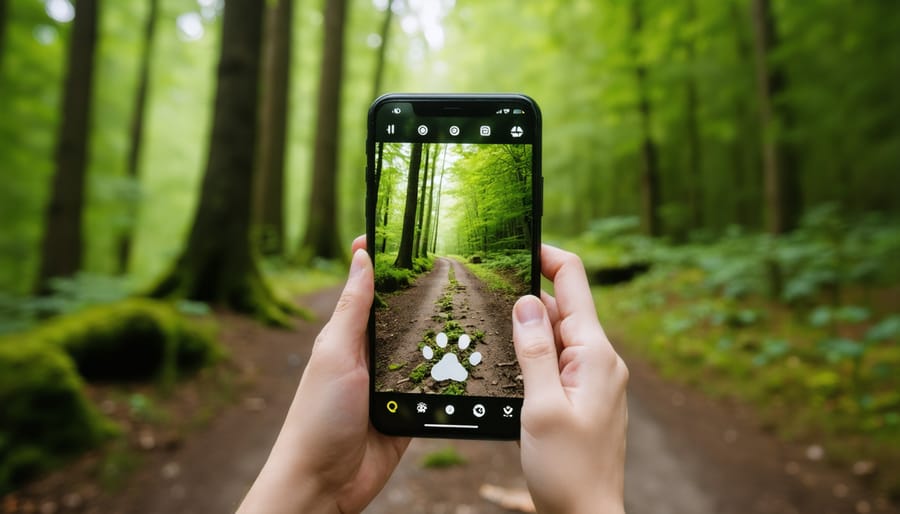
3D Animal Behaviors and Habitats
Imagine stepping into a virtual savannah where a pride of lions prowls through the grass, or watching a beaver construct its dam in real-time – all while standing in an Ontario nature center. This cutting-edge AR technology brings wildlife education to life in ways never before possible. Visitors can observe detailed 3D animal models in motion, displaying authentic behaviors just as they would in their natural habitats.
Using their smartphones or tablets, visitors can witness a peregrine falcon’s diving technique, study the intricate social structure of a wolf pack, or explore the underwater world of lake sturgeon. The AR displays are incredibly detailed, showing everything from an animal’s hunting patterns to its nesting behaviors, seasonal migrations, and interaction with other species.
What makes this technology truly special is its ability to overlay these 3D animals onto real environments. Picture watching a virtual moose wade through an actual stream or seeing a great horned owl perched in a real tree. The experience creates powerful connections between visitors and wildlife, helping them understand the delicate balance of Ontario’s ecosystems.
These immersive displays are particularly effective for children, who can learn about animal adaptations and survival strategies through interactive play. They can track animal movements, observe feeding patterns, and even witness rarely-seen nocturnal behaviors in broad daylight. It’s like having a wildlife documentary come to life right before your eyes!
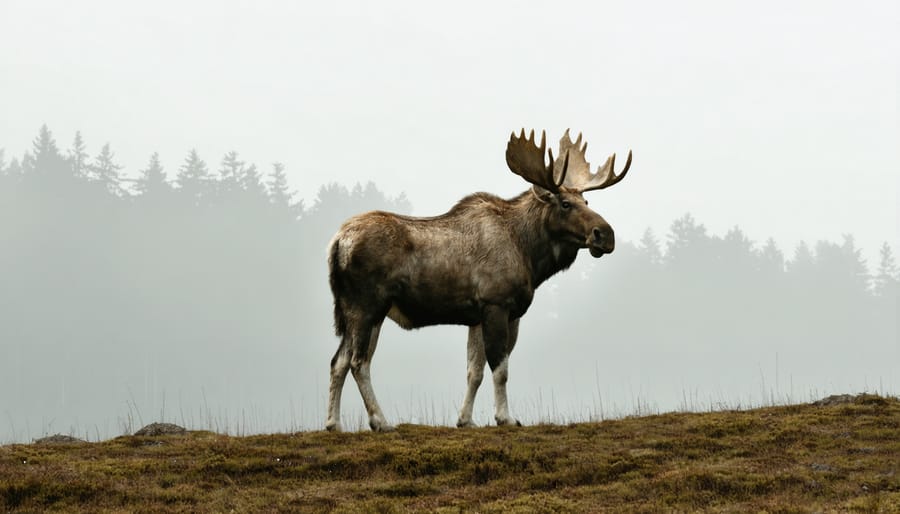
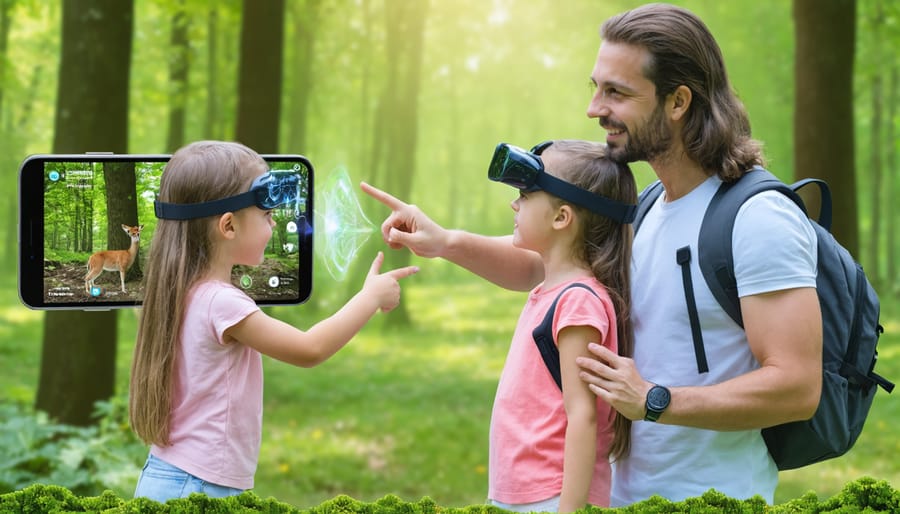
Family-Friendly Learning Experiences
Kids’ Interactive Challenges
Kids can’t get enough of our fun-filled AR challenges that turn learning into an exciting adventure! Watch as your little ones track virtual wildlife through the park using tablet devices, completing engaging missions while discovering fascinating facts about Ontario’s animals and plants. The “Junior Park Explorer” game lets children aged 6-12 solve nature-themed puzzles and earn digital badges for identifying different species.
For younger adventurers (ages 3-5), our “Magic Nature Window” activity uses simple AR features to bring storybook characters to life along designated trail markers. They’ll giggle with delight as friendly animated animals pop up to share interesting facts about their habitats and behaviors.
Older kids (ages 8-14) love our “Eco Detective” challenges, where they use AR tools to investigate environmental changes, measure tree heights, and study animal tracks. These interactive experiences help develop problem-solving skills while fostering a deeper connection with nature.
Each challenge is designed to be both educational and entertaining, with difficulty levels that adjust to your child’s age and learning pace. Don’t forget to download our free park app before your visit to access all these exciting AR activities!
Parent Tips for AR Nature Learning
Want to make the most of AR nature learning with your kids? Start by exploring the apps together before heading outdoors – this helps everyone get comfortable with the technology. When you’re out in nature, encourage your children to alternate between using the AR features and observing the real environment. Set time limits for device use to maintain a healthy balance between digital and natural exploration.
Make it interactive by asking questions about what they discover through the AR experience. For example, when they spot a virtual bird, ask them to look for similar real birds in the area. Turn it into a fun scavenger hunt by creating a list of both AR and real-world nature elements to find.
Remember to keep devices charged and download content before heading out, as some parks may have limited connectivity. Consider bringing a portable battery pack for longer excursions. Most importantly, use AR as a tool to spark curiosity about the real natural world, not as a replacement for genuine outdoor experiences.
For younger children, take turns holding the device and being the “nature guide” to promote sharing and collaborative learning.
Best Ontario Parks for AR Wildlife Experiences
Ontario’s provincial parks are embracing AR technology to create immersive wildlife experiences, with several locations leading the way in digital nature education. Algonquin Park stands out with its innovative “Wildlife Tracker” AR experience, where visitors can use their smartphones to spot and learn about moose, bears, and rare bird species in their natural habitats.
At Killbear Provincial Park, the “Marine Life Explorer” AR feature lets you discover underwater ecosystems along the Georgian Bay shoreline. Point your device at the water to reveal 3D animations of native fish species, teaching visitors about local aquatic life without disturbing the actual environment.
Pinery Provincial Park offers an exceptional AR bird-watching experience through its “Wings of Ontario” program. The park’s oak savanna ecosystem comes alive as visitors can identify and learn about over 300 bird species through their device’s camera view.
Insider tip: Visit during spring migration (April-May) or fall migration (September-October) for the most engaging AR wildlife experiences. Download the park-specific apps before your visit, as cellular service can be spotty in some areas.
For families, Presqu’ile Provincial Park’s “Junior Naturalist AR” program is perfect for young explorers. Kids can complete digital scavenger hunts while learning about local wildlife and earning virtual badges. The best times to visit are during weekday mornings when the trails are less crowded and the AR features work more smoothly.
Remember to keep your device’s volume low to avoid disturbing real wildlife, and always follow park guidelines while using AR features.
Augmented reality has revolutionized how we experience and learn about wildlife in Ontario’s natural spaces. By blending digital elements with the real world, AR creates an immersive educational experience that brings nature to life in ways traditional methods simply can’t match. Whether you’re watching a virtual moose demonstrate its natural behaviors or learning about bird migration patterns through interactive 3D models, AR technology makes wildlife education more engaging and memorable for visitors of all ages.
The best part? You don’t need to be tech-savvy to enjoy these experiences. Most AR features are user-friendly and accessible through your smartphone or tablet. Plus, they offer a non-intrusive way to learn about wildlife while respecting their natural habitats.
Next time you’re planning a park visit, consider trying one of the AR experiences available. Not only will you gain a deeper understanding of Ontario’s diverse wildlife, but you’ll also create lasting memories and perhaps spark a lifelong interest in nature conservation. Remember, the future of wildlife education is here – and it’s more exciting and interactive than ever before!

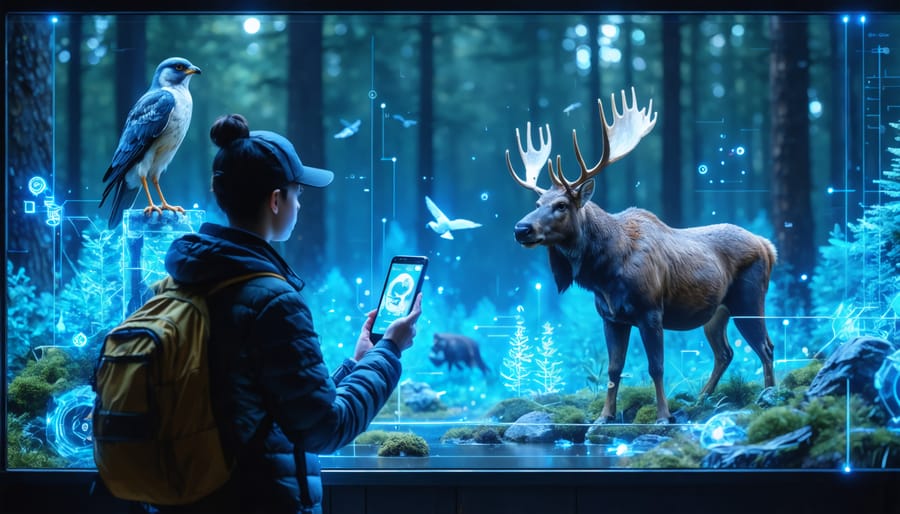
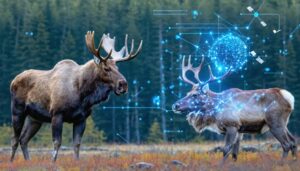

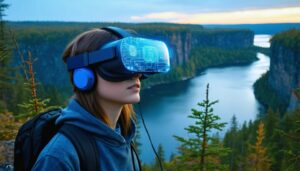





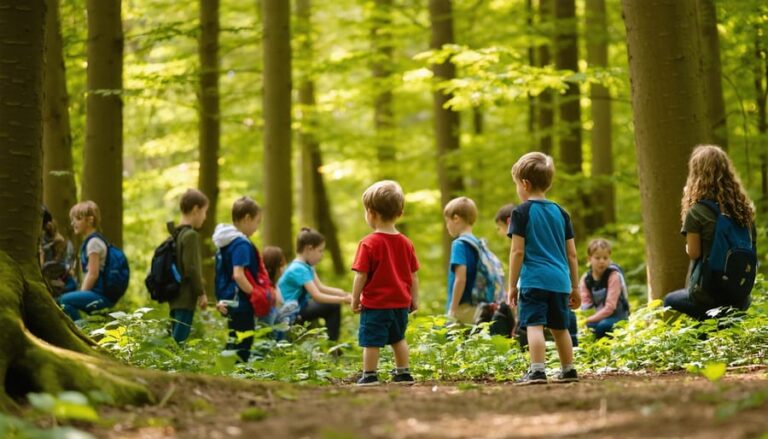



+ There are no comments
Add yours